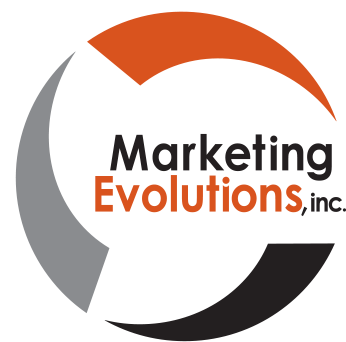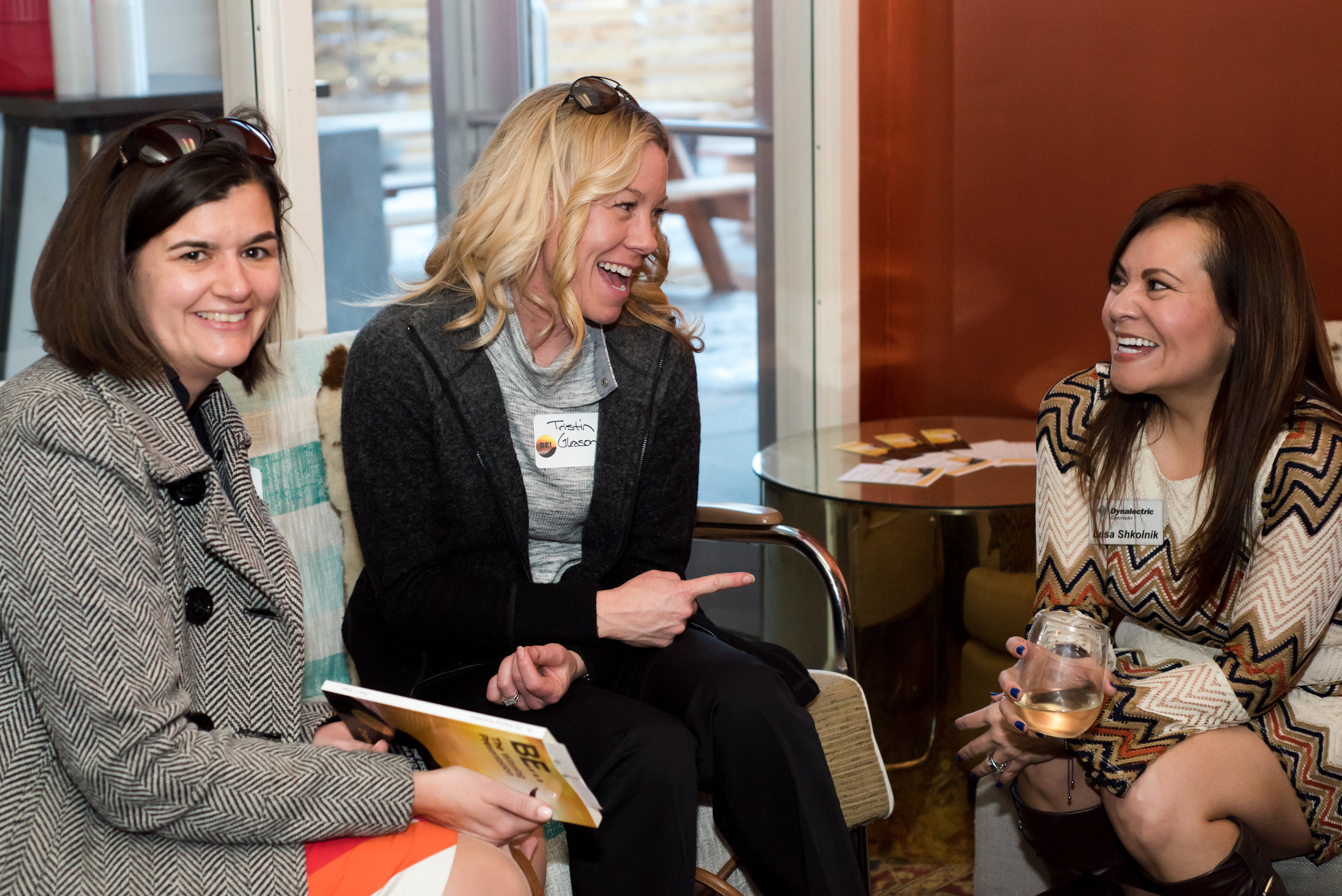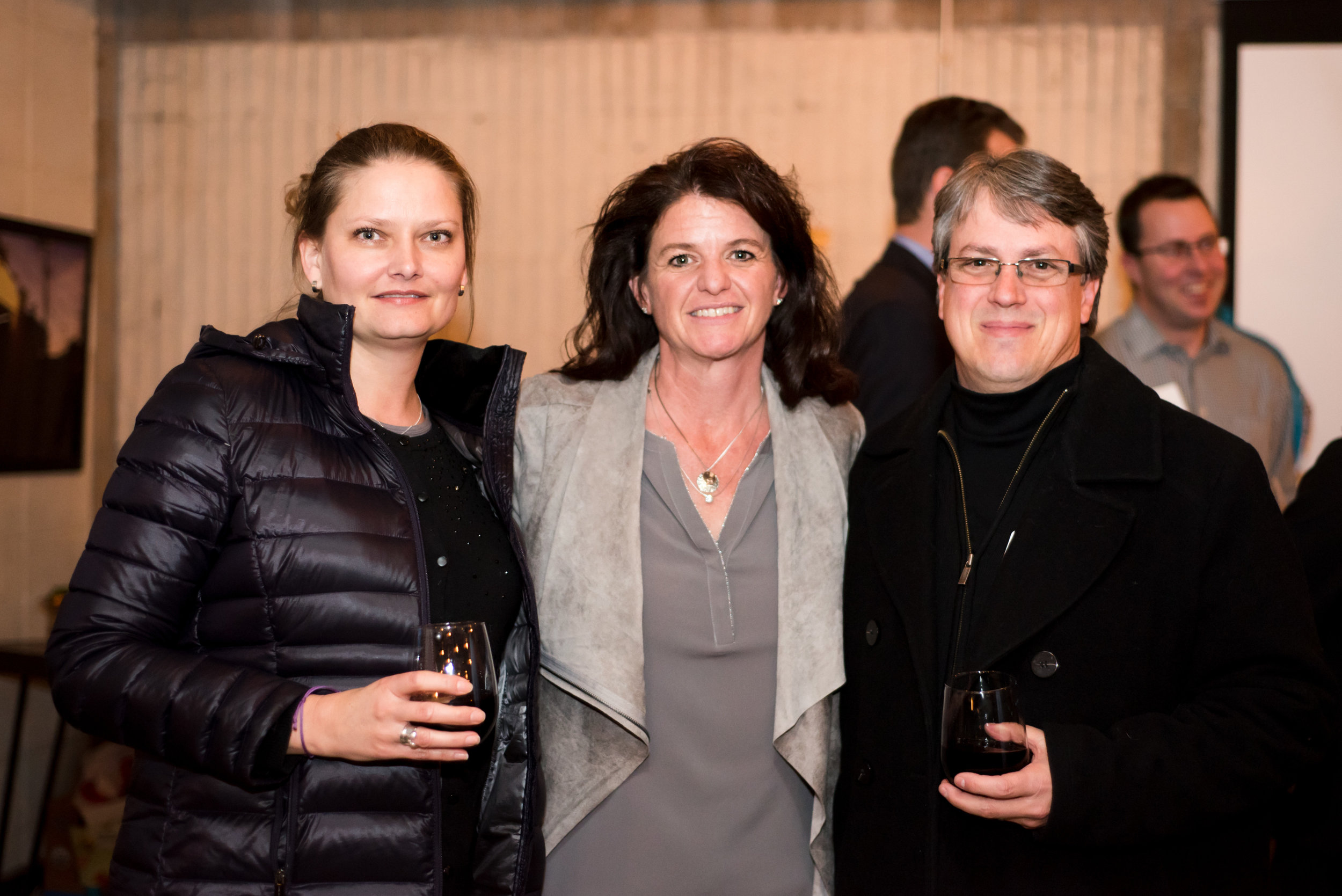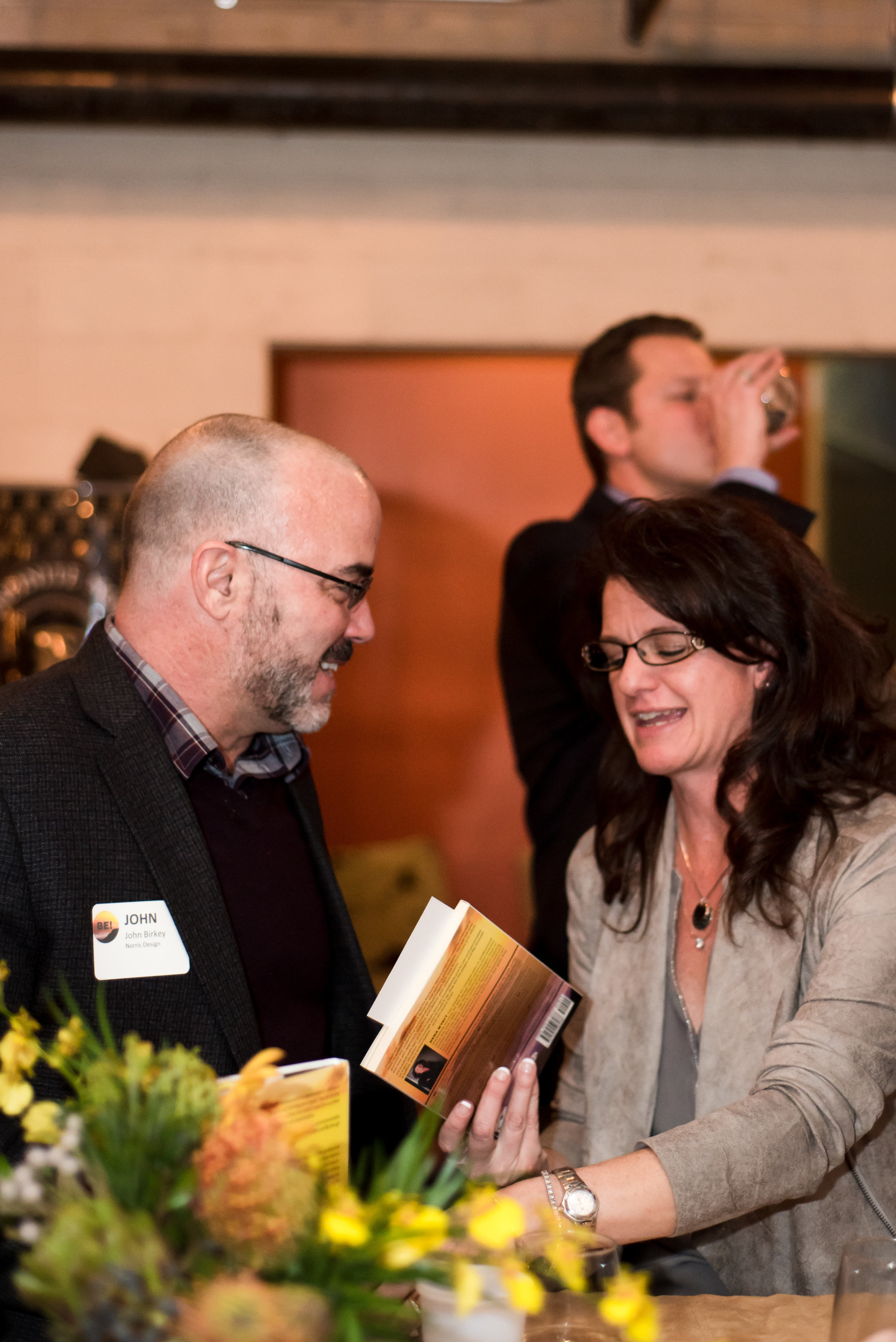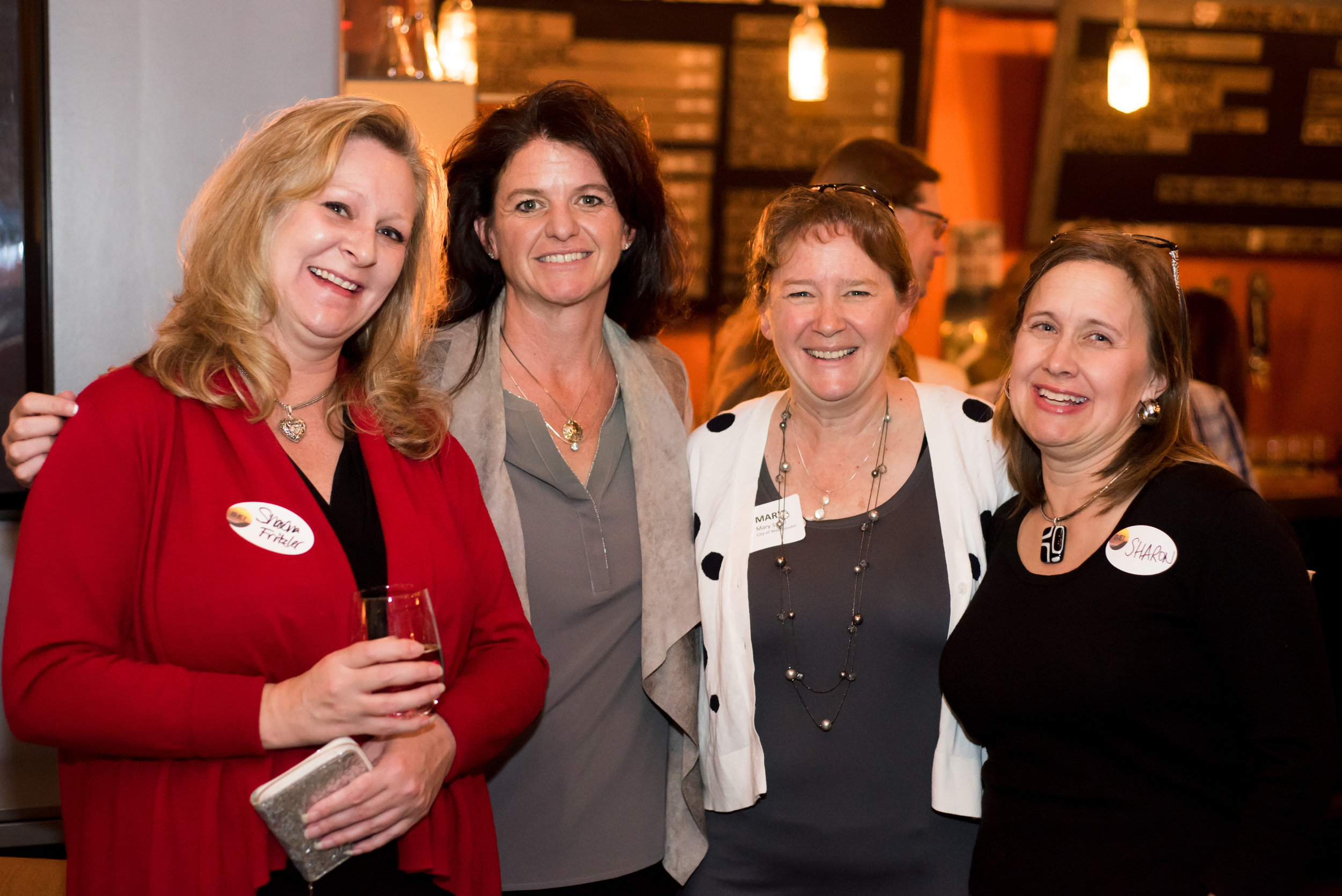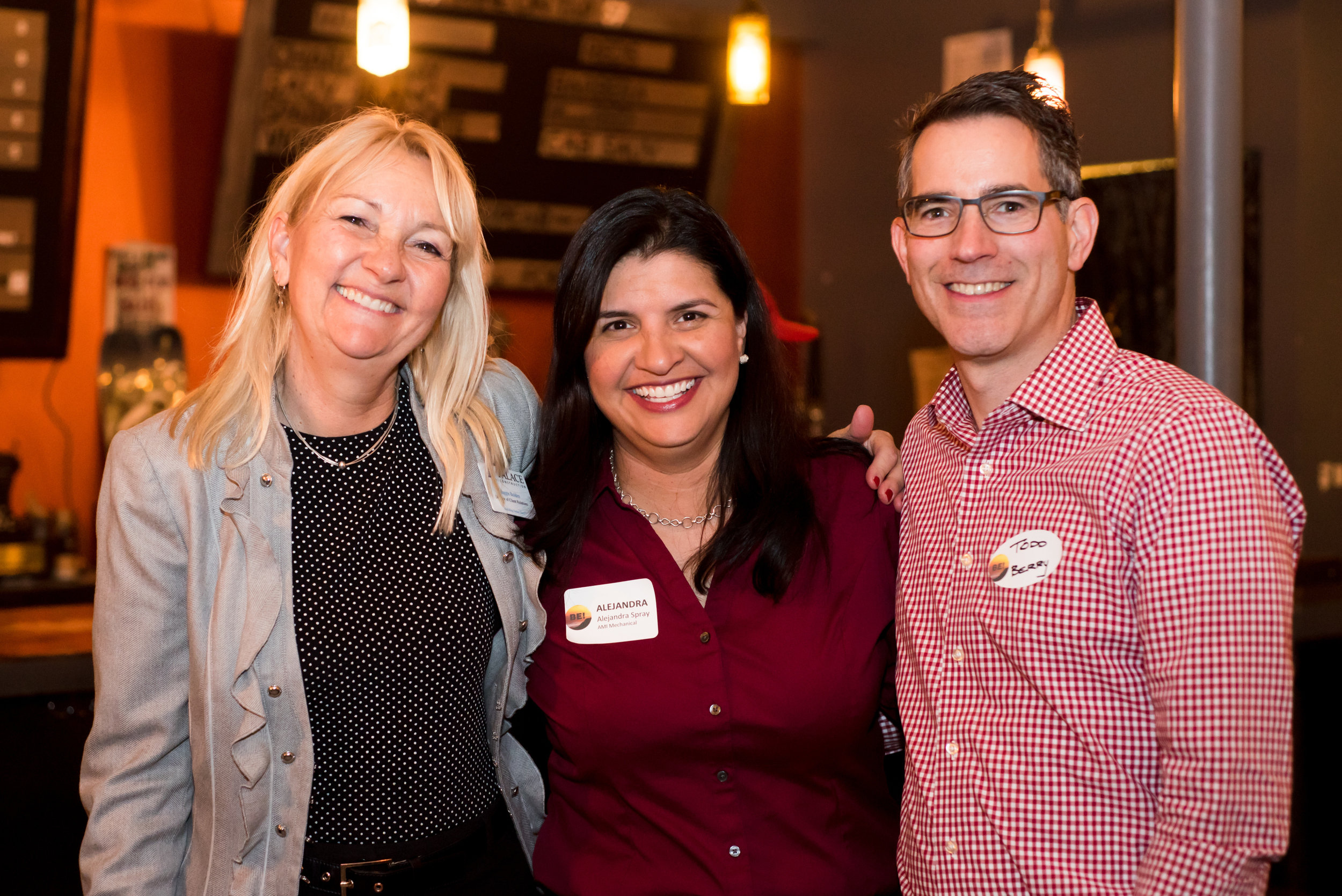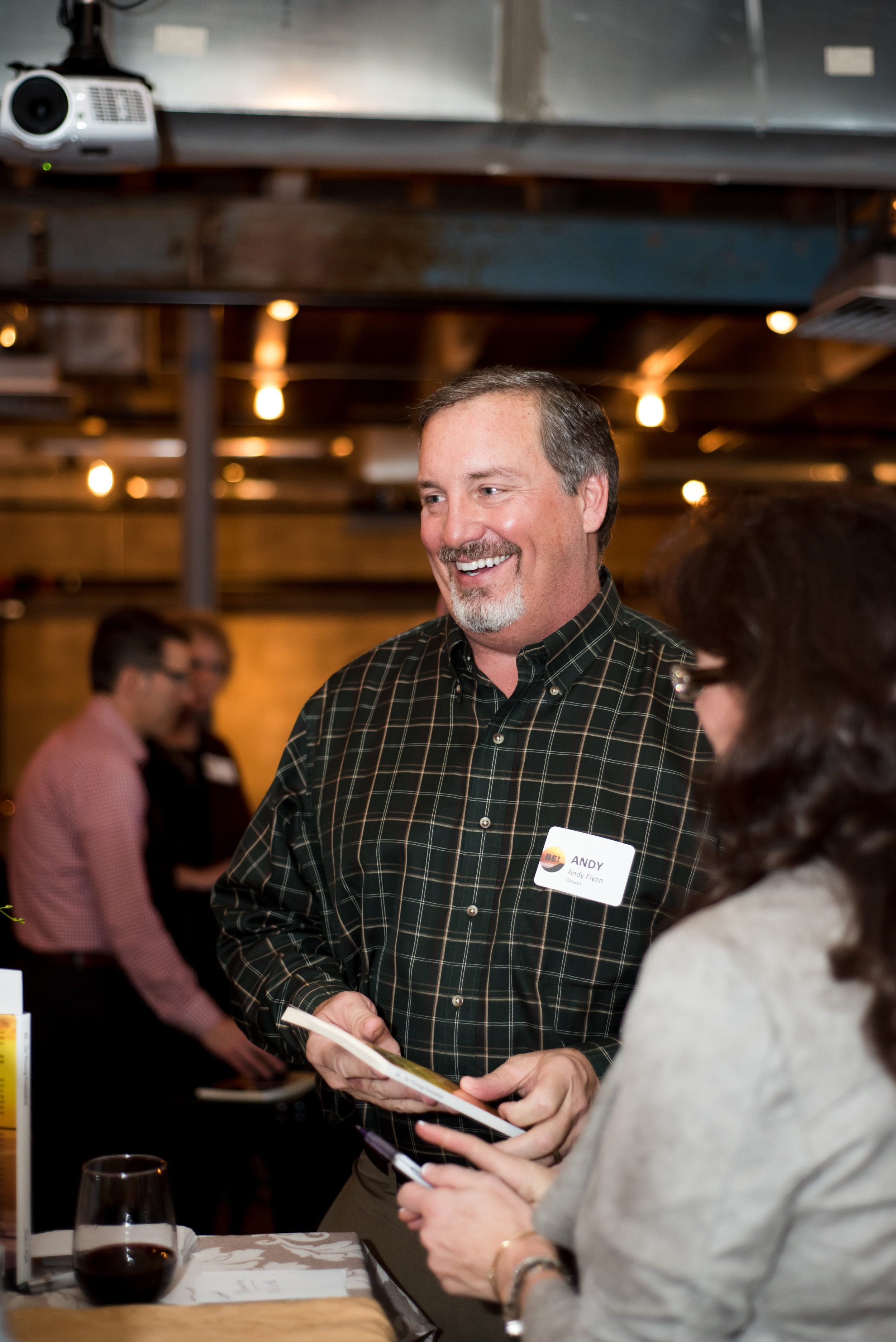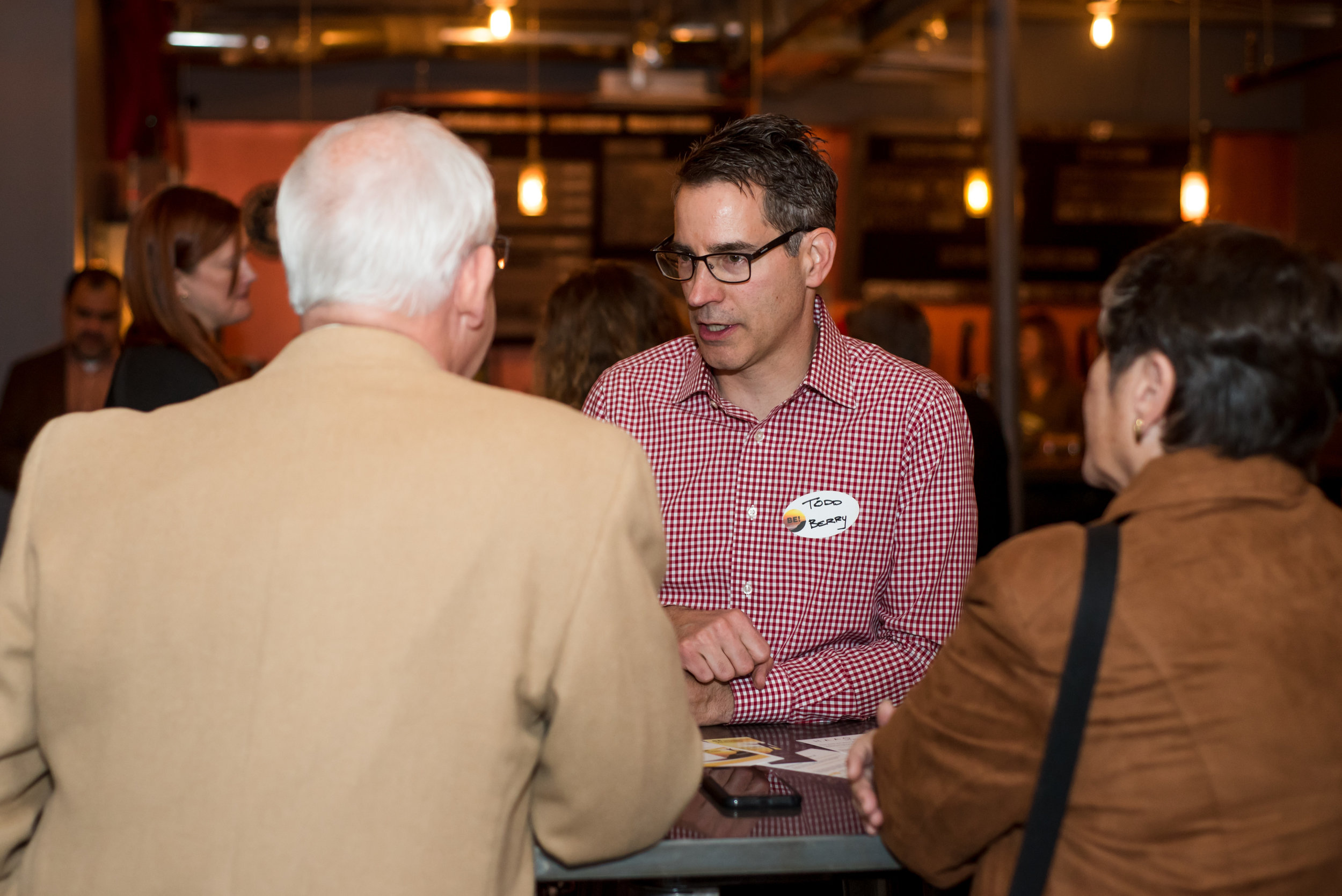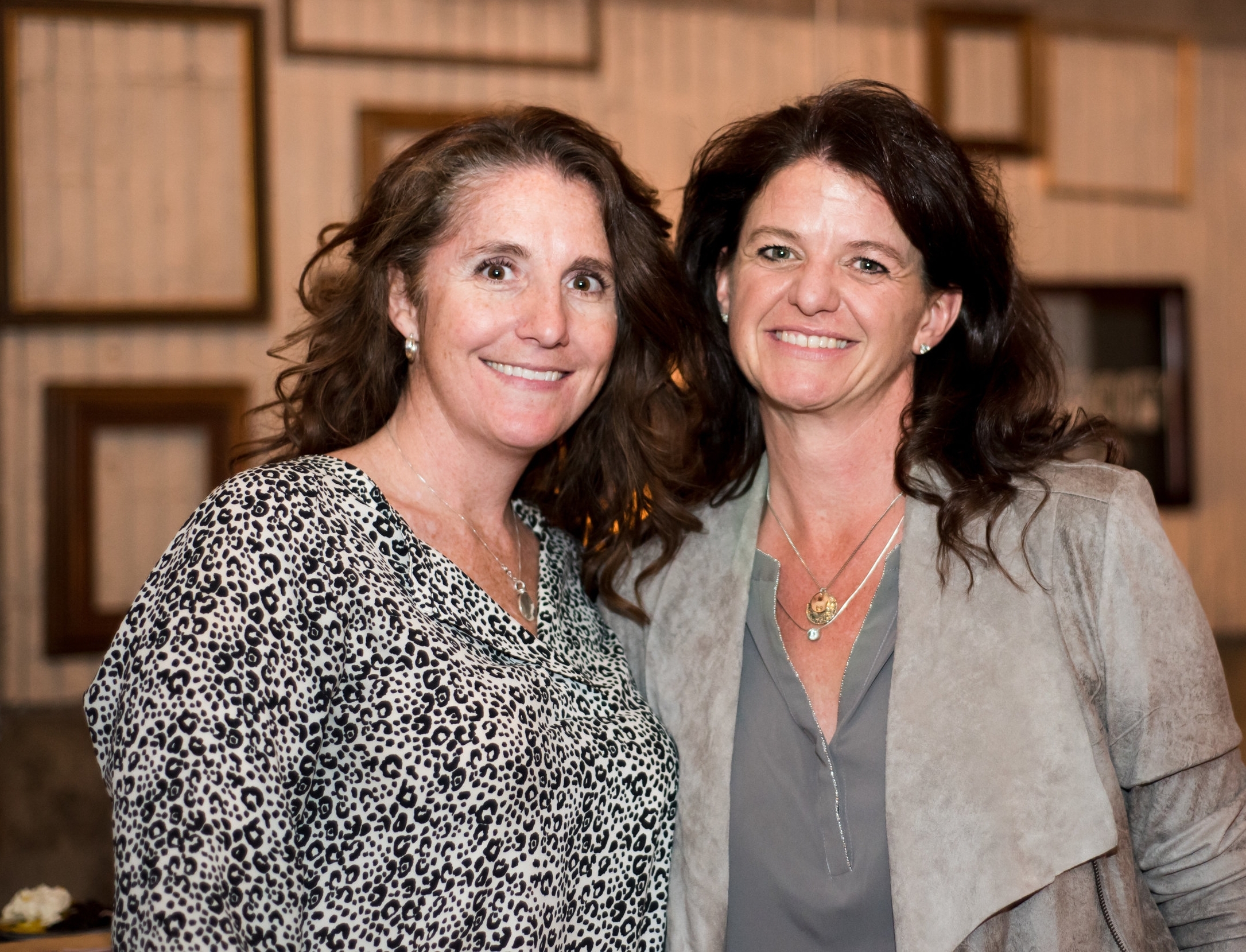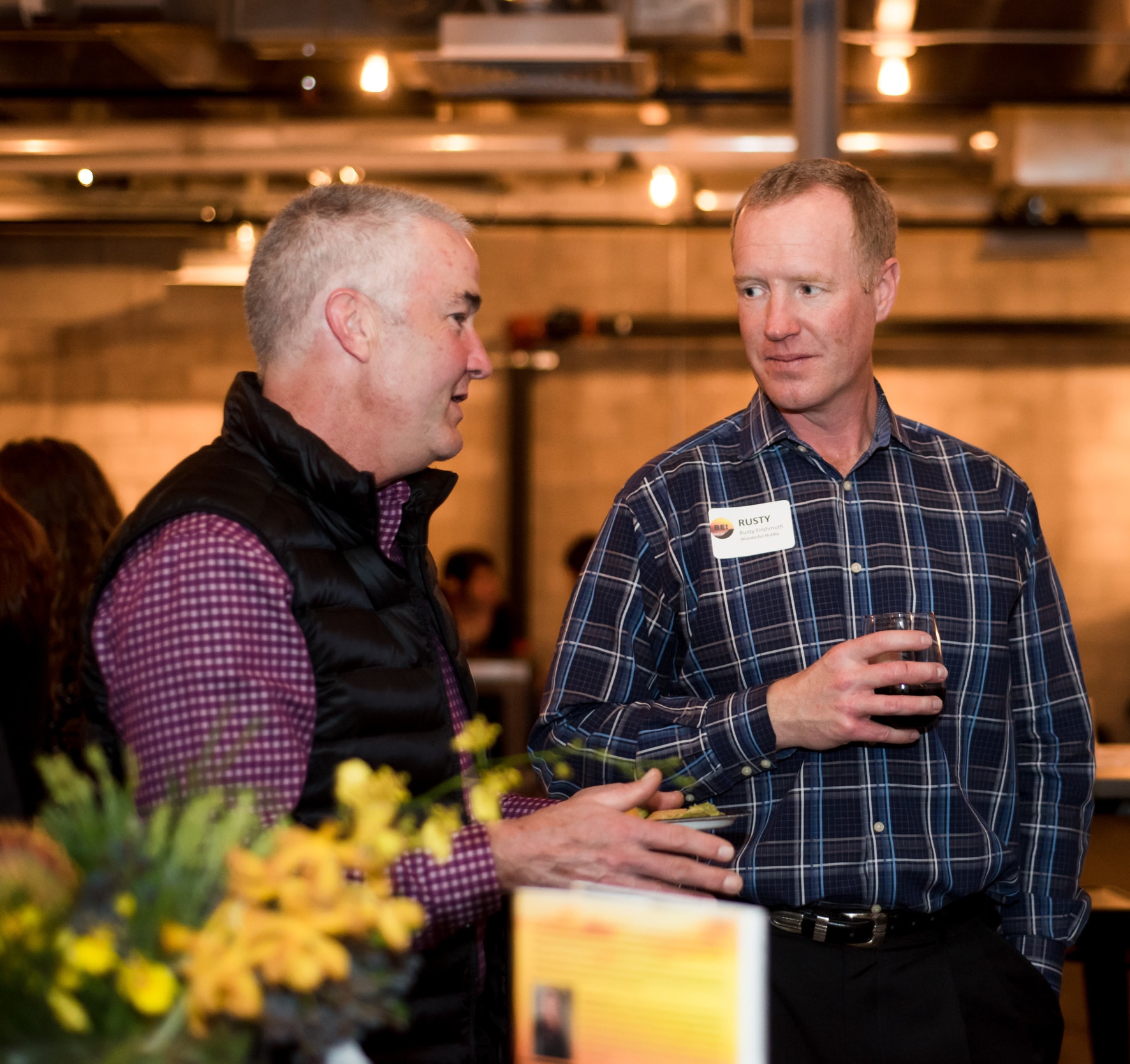Dena Wyatt is pleased to close the SMPS Southern Regional Conference by connecting all of the conference insights so that you can Live YOUR Vibe! Learn more about the conference and how to register by visiting the conference website.
Crush Your Critical Moments With More Dynamic Communication
As A/E/C marketers and business developers, one of our most critical responsibilities is to set the tone for great communications and to serve as our firm’s role model in this area. We’re often looked upon as the coaches and promoters of the staff, the creative message drivers, the visual-aid defenders, as well as the writers and editors. In business communications, you have an opportunity to make a huge impact on your technical staff and those working around you every day.
When was the last time you thought about your communication style and the lasting impact your communications has on others? How dynamic are you at delivering information? Do you really connect with your co-workers, boss, technical staff, or your audience? Do they remember what you say? Do they take action or create change based on your message? More importantly, can you move others to action or close a deal when it counts?
No more excuses! Now is the time to take a critical look at your communication style and give it a jolt. Committing to the following five tips will get you back to a more dynamic you.
1. BE MORE PREPARED. Know your audience and gain a deeper connection through that knowledge. Everyone is busy, but that’s no excuse for not taking a few extra minutes to flex some fundamentals. Get organized on who will be in the meeting or at the presentation. Understand who they are and what’s important to them, identify what questions they may ask, outline what strengths and shortcomings you may have with communications, and know what desired outcome you want from the communications. An extra five minutes of planning before every meeting will keep you focused, efficient, and more impactful.
2. BE MORE PASSIONATE. Passion sells. It gets your point across more easily and, when backed up with data, it’s hard to beat. In presentations and meetings, learn to use vocal variety instead of sounding monotone. Pause for emphasis to let your key points sink into the audience’s thinking. Drive more interest through the sound of your voice and selection of words. Train yourself and others on how to leverage their voices to their advantage. Let them know it will help them communicate in a more expressive and deliberate way. With passion in your presentation, you become more interesting through the stories you tell, and people listen with more intent. Your team doesn’t need to turn into actors or Jack Russell terriers. Just encourage them to move the bar up 20 percent or so in intensity, even if they say it’s a little uncomfortable for them. The passion in their voices will pay off.
3. BE MORE TRUSTWORTHY. In today’s environment, it’s crucial to be trustworthy to your prospective clients. Do that by syncing up your passionate tone with dynamic and well-managed body language. Focus on eliminating any distracting movements to project a more trustworthy persona. Stand calmly and coolly (no fidgeting) to demonstrate your confidence. Learn how to strategically focus on whom you want to engage with and how you want to proceed with that engagement. Learn to command the room with your eyes and know that you can easily send the wrong signals and not even know you’re doing it. Learn to use your eye movement to your advantage.
4. BE MORE MEMORABLE. Yes, words matter. And people generally know when your words aren’t honest or don’t ring true. When speaking, stay within your comfort zone with your vernacular and expertise. Knowing all the folks you’re in front of lets you know whom to drive the message to, and at what level. Understand and master the flow of your language. For example, in your presentation, start with layman’s terms and wait for confirmation back from your audience to make sure it’s okay to move into a deeper level of detail. Then, present your closing arguments on the point. Stay concise. When you ramble, you run the risk of losing your audience. When considering what to say, always remember to answer the “So what?” question that’s always in your audience’s mind and bring forward the benefits to the listener, especially when you want to persuade them.
5. BE A CONFIDENT CLOSER. This is the most important part. Pay attention to how you finish topics, conversations, presentations, and other opportunities and drive your message home or transition to another point. When you’re selling, the last thing you say is usually a solution, benefit, past proof, or differentiator. Practice that last thing you say. Then, once you’ve made that point, pause and let it soak in. Silence, at the right time, is the most powerful thing not said. Control your closing dynamics, tell a great story, and be deliberate about the way you finish and you’ll stand out even more from the crowd. When you excel at everyday communications and formal speaking, you gain more trust and respect. You are perceived as a better leader, people retain more of what you say, and you’re able to advance your career faster. People notice when you speak with purpose. Focus on these five dynamic communication tactics and you’ll see a difference in the way your listeners pay attention. More folks will look up and listen, give a reassuring nod, become more engaged, and demonstrate greater buy-in. You’ll speak more confidently, deliver greater impact, and be a better you!
©Marketer, The Journal of the Society for Marketing Professional Services, April 2019, www.smps.org (http://www.smps.org/) -Co-authored with Josh Roberts. Thank you for allowing the reprint this article.
BE Passionate! Leverage Your Vocal Variety.
Good presenters know that it is the delivery of those words that tip the scales and create the winning presentation. The very sound and tone of your voice evokes passion (or lack thereof). Words do not evoke passion; words give information.
Use your voice to convey energy, excitement and passion. To be interesting and easy to listen to - it’s all about the way you use your voice. It’s all about how you deliver those words.
Apply vocal dynamics because:
1. Vocal emphasis and inflection are two of the best ways to spark interest in your audience. (hint: This also works in normal conversation.)
2. Using inflection will emphasize key words in a sentence.
3. Fluctuating between louder and softer assertions keeps the audience listening and focused.
How do you use your voice to further convey passion? This is an especially important question for people who talk a mile-a-minute. You are probably tired of hearing people telling you to slow down. Try this instead: P-A-U-S-E. Emphasize with silence your important comments. This lets your audience keep pace with you. If you feel like rushing to get it all in, you have too many words and too many thoughts. BOIL IT DOWN. What is the most important things that need to be said?
Don’t rush and speak faster trying to get it all in. Say less and say it with power and conviction! Your audience will actually remember more!
Don’t Flat-line and Die on the Stage Visualize a doctor’s electronic heart rate monitor, the one with the blipping screen and the line going up and down. This shows your heart-rate. What does it mean if the line runs flat across the bottom of the screen? That’s right: You’re dead. A monotone voice - talking at the same, flat rate, without inflection…and your presentation dies, too. You will put your audience to sleep. Instantly. In short, you are going to die.
Use your voice to convey energy, excitement, and passion. Your audience will stay interested by the virtue of HOW YOU SOUND.
BE...Positive - Banish your inner wimp
You can grin. You can dance.
But if you use certain telltale “Wimpy Words”, the game’s over before you begin. You may not be aware of it, but these pesky, little telltale indications of negativity are an open window to your inner feelings about the client, your team, your company, you name it.
Wimpy words…
Reveal your underlying fear
Uncover your uncertainty
Show your lack of confidence
Equate to lack of commitmentto the project
Are NOT persuasive and do not build trust!
Do you routinely use any of the following in conversation?
“I’ll try”
“Hopefully” “Maybe” “Might” or “Probably”
“I think” “In my opinion” or “I believe”
If you do, STOP it right now! These words belong in a glossary for wimps! If you use these affirmations of wimpy-ness in normal conversation, they’ll certainly show up in your presentations and interviews.
Use action words for clarity and conviction.
“We do…” “We are confident...”
“I know…” “Experience-gained...”
“Embrace the challenge...”
"Eliminate the learning curve...”
Practice.
Instead of “We will, or we’ll try...”
Say, “Experience has taught us…“ or “We do this."
Build Trust. Tell your client what you DO!
When you walk into an interview, act like you already have the job. Be in the moment. Brainstorm about project challenges. Be the best team. Now, in your mind’s eye, you’re already moving forward, building the project and speaking confidently.
“We KNOW we can meet your project schedule.”
“We’re confident your project can meet your budget.”
“We have a plan.”
“We DO this on every job.”
The simple state of being in the moment; using strong, positive words, and pulling out the subtle hesitations – the implied negatives – gives your client a sense of confidence…in you, and in what you have to say.
Secret Weapon to Use During Q & A
Building on our prior article, "How to handle Q & A," a secret weapon follows that will make your answer strong and convincing. This formula keeps you focused on the client and is especially helpful with those broad questions like “Describe your communication style?” Or “What constitutes a change order?”
It is called the ST. A. R. formula.
ST – Situation
A – Action
R – Results
Let’s play this out, say you are asked: “What constitutes a change order?”
(First, always start with an overarching statement – like your philosophy or the culture your company holds about the topic.)
“We hate change orders! Change orders often have a negative connotation in our industry and are more prevalent on hard bid projects.” (Now, move into the ST.A.R. formula)
• ST - Under the GMP, as is proposed for this project, we don’t anticipate any change orders from the construction side. The only change order would come from a change in scope. (This is the situation as pertains to their job.)
• A - Our early involvement during preconstruction allows us to thoroughly understand the project and assist the design team in filling in any gaps that may be discovered. Additionally, we review the scope with the subcontractors to ensure they have a complete and thorough scope and price as well. (The action you take to control and mitigate change orders.)
• R - The result is a project that meets your expectations and meets the budget we developed early on. We have completed our last 5 projects with zero contractor change orders. (The result and benefit to the client with any proof and evidence you have to back your statement.)
This formula helps keep you focused on the client, their project, and the value your team brings to the project.
In the last article on this topic, we will share things to avoid during Q & A.
Tips to Handle Q & A with Ease
Congratulations, you made it through the interview! Now it is time for the Question and Answer (Q & A) portion.
Don’t fool yourself, you still need to prepare for and practice this portion of the interview. But, how can you prepare when you don’t know what will be asked? Simple, address these areas and you’ll be ready.
1. Think about what you don’t want them to ask.
2. Review what you have been asked in previous interviews.
3. Understand the challenges facing their project and how you can mitigate them.
4. Review the information you have on the project. Is the budget adequate? How do you feel about the schedule? Do you have questions about systems or materials?
If you discuss these areas within your team, you will prepare yourself for the majority of questions that will be asked.
Once you have a handle on the information that will likely be discussed, below are some tips to increase your confidence in your answers.
First, remember, your purpose during Q&A is the same as it was during the presentation:
TO PERSUADE THE OWNER THAT YOU ARE THE RIGHT TEAM!
Here’s how to approach every question.
1. Listen. Listen fully to the question. Don’t interrupt or start to answer the question because you THINK you know what is going to be asked. Relax and listen to the entire question to understand what the client is looking for.
2. Explore. Q&A is the time when you can ask questions back! If you don’t understand what the client is looking for or the question seems vague, ask for more clarification. Explore what the client is really after, so you can properly answer.
3. Respond. Only after you have listened and fully understood the question, then you give your response. Keep your answer concise and keep reinforcing your team’s strengths and differentiators.
This is part 1 of a 3 part series on Q & A. The next article will share a formula to help us handle difficult questions.
Delivery Matters – Six tips to look and sound better in your next presentation
So you’ve made the short list and have an interview with a perspective client. Don’t only focus on the content – your message – You must be able to deliver that message as well. Having the right content that is focused on their project, their challenges and demonstrating that you’ve solved similar issues in the past, is only half of the equation. The other half is how that message is delivered and how it connects and resonates with the listener.
1. Be yourself. Relax. Don’t try to be something you are not and never try to memorize your part. You are not an actor. Clients are not looking for a polished perfect presenter – just be your straight-forward, trustworthy, authentic self and convey your ideas about their wants and needs.
2. Stay still. This means planting your feet, no dancing, swaying, or pacing. Pretend you are an old oak tree; firmly rooted into the ground. Your base – the trunk – doesn’t move. Not even in the strongest winds. Planting yourself gives you power and authority.
Then, when you want to move, do so and do it with purpose. This creates meaningful movement and stops the distraction of swaying and pacing. Moving without purpose is distracting and makes the speaker look nervous.
3. Use your hands. Most people get into trouble when they try to keep their hands down. Inevitably they end up getting clasped behind the back looking like an inmate or in front in the fig leaf position or holding on to one another in a death grip or twisting motion. Keep your hands up and apart and use them in appropriate gestures that reinforce your message.
4. Be passionate. Use your voice to convey energy, excitement and passion. Vocal emphasis and inflection sparks interest in your audience. (This also works in normal conversation.) Remember your pacing: If you speak fast, slow down just a tad; if you’re slow, pick it up. You want a good conversational pace that is easy to listen to.
5. Be trustworthy – make eye contact. Don’t just scan the room. Scanning is what we do to assess a situation. We do this to take note of our surroundings and it indicates a state of wariness. Like when we walk to our car at night.
When speaking, actually lock eyes with someone for a couple of seconds. And make it a habit to make a connection with everyone on the selection committee! This creates a genuine connection and builds trust.
6. Be Positive. Don’t use “Wimpy Words” when you talk to others. Refrain from
“Try” “Hopefully” “Maybe” “Might” “Probably” “I think” “I believe”
as these words undermine the connection you are trying to make. They reveal your underlying fear, uncertainty, and lack of confidence. Your listener equates this to your lack of commitment to the project.
Just listen to: “I think we can meet your schedule.” or “I hope we can make your budget work.” Would you hire this team? NO WAY! Owners want to hire the team that knows they can design or build their project!
Owners want to have confidence in the team they select to build their projects. It’s the DELIVERY that creates that FEELING of confidence and it is the DELIVERY that tips the scales and wins projects.
A Heartfelt Thank You!
Thank you to all who attended the open house and book signing.
What an honor to see so many clients and friends at the release of BE!
Congratulations to our door prize winners -
Jesus Moncada, P.E., Jacobs
Todd Berry, LEED AP, CHC, Howell Construction
Dennis Richard, V.P., GTC
they receive a one-hour workshop and a copy of the book.
Why not just memorize your presentation?
Sure we all have things in our lives that we memorize, right? Our “ABC’s”, the “Pledge of Allegiance,” prayers – I was raised Catholic, so I have a lot of those still in my mind today. But even as long as I have known, and the countless times I’ve recited the “Our Father”, I still can’t start it in the middle.
Same holds true with your presentations, the client asks a question and you lose track. It’s nearly impossible to answer that question and get back on target. Besides, if a presentation is memorized, it will sound scripted. If you try to memorize a script, unless you’re a natural actor, the client will pick up on it every time.
You actually put more stress on yourself when you try to memorize, because when you do forget a word – and you will – or if you get a little bit off track, you will become so nervous that you stand a good chance of losing the whole thing. And, you cannot recover from that. Besides, none of us have that much time in our day.
Here is how to prepare in the easiest and quickest manner.
- Know your opening statement. And, make sure it connects to one of the client’s needs or issues they face.
- Define three keys to success. In other words, what are the three ways you help solve that issue your client is facing? Write out your bullet points. Not the entire sentence, just key words that spark your memory. Now, get those bullet points down, this is your outline.
- Talk naturally about each bullet point. This is your conversation with the client and how you can help them. It will change slightly each time and that is just fine. You will get your point across.
- Have your closing statement down. This will keep you from rambling and you know you are done. This closing statement should also include the benefit to the client.
This type of outline creates a conversational tone, allows you to be in the moment, and more interactive. And, when you practice your outline, practice out loud. Have you ever practiced anything in your head, from a speech to song lyrics? It always sounds great, doesn’t it? The words flow without a hitch, all perfectly formed without a single “uhm” or awkward pause, no wimpy words, and no “loss for words.” In other words, you sound like a Hollywood actor turned rock star. But try it again, out loud. It sounds a lot different, doesn’t it?
When you practice, it has to be out loud. For the next level, try it in the mirror. Watch your own facial expressions. Do you look grumpy or approachable? Do you look friendly and likeable, but insincere? Do you have good posture? Are you making the connection you would like?
When you practice in this manner, your next presentation will be conversational and will make a stronger connection with your listener. Make it easier on yourself – Don’t memorize your part! Practice your part in a conversational manner.
There are more winning strategies around successful presentations in "BE... The Winning Strategy" -- buy your copy today.
Open House and Book Signing Party
The Client Interview a.K.A. the 'Short List' Presentation
The industry is going strong, you’ve made the short list, but is your firm ready to compete and win the interview? The following is an except from my new book BE…The Winning Presentation – The essential handbook to master the short list interview and win more work.
The client interview is frequently one of the most overlooked aspects of a project pursuit. While everyone sharpens their pencils on the cost estimate and works and reworks the schedule to the nth degree, in comparison, very little time and effort is spent preparing for the one chance you have to actually be face to face with your prospective client and discuss their project and unique needs. It likely is not a coincidence that the interview is also the most feared aspect of the process. It is well known that public speaking is frequently one of people’s top fears. This is particularly true of the highly skilled technical professionals found in the Architecture, Engineering, and Construction (AEC) firms. These technical professionals are generally not trained to present their thoughts and ideas in front of a diverse group of individuals, yet that is exactly what you need to do to win.
In the end, every firm that has been short-listed and is interviewing to design or build the project is qualified. The ONLY thing you can do to affect the outcome at this point is to give the best presentation, one that connects with the client and persuades them that you are the best choice for the project.
No Dog and Pony Show Allowed
You’ve already submitted a proposal that educated and informed them about your qualifications, capabilities, and firm history. If the client didn’t think you were qualified to do the project, you wouldn’t be at the interview. In fact, in the mind of the client, every firm that is interviewing is capable of doing the project.
The clients don’t want a rehash of your proposal; they are more savvy and sophisticated than that! The traditional ‘Dog and Pony Show’ is out. Sure, that approach used to win work years ago and it didn’t take much effort to prepare for that kind of presentation.
Those days are past.
Now, the client wants to meet your team and see and hear more. Now, you must persuade the client you are the right company for the job. You must make an emotional connection with the client. I know what you are thinking… we are contractors – we don’t show emotion… By emotional connection I mean, you must demonstrate a deeper understanding of the client’s emotional needs and concerns. You must understand what their fears are, what is keeping them up at night.
What your Clients Want
Let’s take a step back and look at what our clients say about the interview process. I have conducted hundreds of debriefs with clients, both public and private to better understand the selection process and what they look for and what tips the scales during the interviews. I want to share the following trends and comments that rose to the top.
“We don’t want a ‘sales’ presentation. We wanted to know what they knew about us.”
“The losing presentation was canned and sounded generic. The winners’ presentations were totally geared towards us.”
“The winning team had a very detailed approach, especially when it came to showing us how OUR issues would be solved.”
Notice how not even one respondent said they needed more info about you or your firm?
The teams that connected, the teams they remembered, all had built TRUST and not only showed, but proved to the client that they could successfully deal with and solve the challenges of their project.
At the end of the day, your clients are looking for the “SAFE CHOICE”: The firm that can get it done and make them look good.
Here are three ways you can make a stronger, lasting connection with your audience.
1. Show them you understand the risks of their project.
The client must know that you understand their project, the possible challenges and risks that go along with it. Spend time reviewing drawings, visit the site, understand everything about the goals and vision for their project and any roadblocks that could be encountered along the way. And discuss these during the interview. Let the client know you’ve done your homework and understand their situation.
2. Discuss how you can solve their challenges.
You’ve done your homework and understand their issues, now you must come up with solutions and how your team will deal with these challenges. That doesn’t mean coming in to the interview with their project already designed. But it does mean that you have given thought to and have concepts in mind and can solve the issues they will be facing.
3. Prove you’ve solved similar challenges.
Remember, your potential client is looking for the ‘Safe Choice’, the team that has ‘been there – done that’ and done it successfully. This is where you show the client where you have faced and dealt with similar issues and how you successfully overcame those challenges. Caution: don’t confuse this with simply showing the client pictures of 10 other similar projects you have completed. They are wanting more than that – they want (and need) you to connect the dots – specifically for them. It’s finding very specific and detailed examples of past projects that faced similar challenges. Then, as you are addressing their concerns and talking about how you mitigate that risk – or solve that challenge, you follow-up with the exact example of where you solved that same issue previously.
See the difference? When you showcase your previous experience in this manner, it holds more credibility with the owner and builds that emotional connection you are striving to achieve.
Lasting persuasion and connection starts with the right content; understanding your client, their concerns and challenges, and having the right solutions.
With great thanks to you!
As 2016 draws to an end, I wanted to wish you a very Merry Christmas and thank you for your support and encouragement. It’s hard to believe it’s been nearly 13 years since I founded Marketing Evolutions, and I wouldn’t be able to do the work I care so deeply about without friends and clients like you.
It is with great excitement that I announce my book -
BE…The Winning Presentation
The essential handbook to master the short list interview and win more work.
This handbook was written for busy technical professionals to understand how to prepare and present a dynamic and winning presentation. It’s loaded with tips and techniques you can immediately put to use and personalize to every situation.
I have a true passion for helping teams improve their presentation skills and win work. There is no greater success than watching a team come together, deliver a killer presentation, and win the job!
I wanted to be able to help more people and reinforce the training that I provide. I want to help you continue to master the interview and be more successful. This book will do just that.
Thank you for allowing me to be a part of your continued success.
Here’s to a prosperous 2017 and BEing your best!
__________________________________________________________
Mark your calendar, and please join me for an open house and official book signing on Monday, January 30, 2017 at the Infinite Monkey tasting room, 3200 Larimer Street, Denver 4-7 pm
Can’t wait that long? BE… is available now on BEevolutionary.com, Xlibris.com & Amazon.
